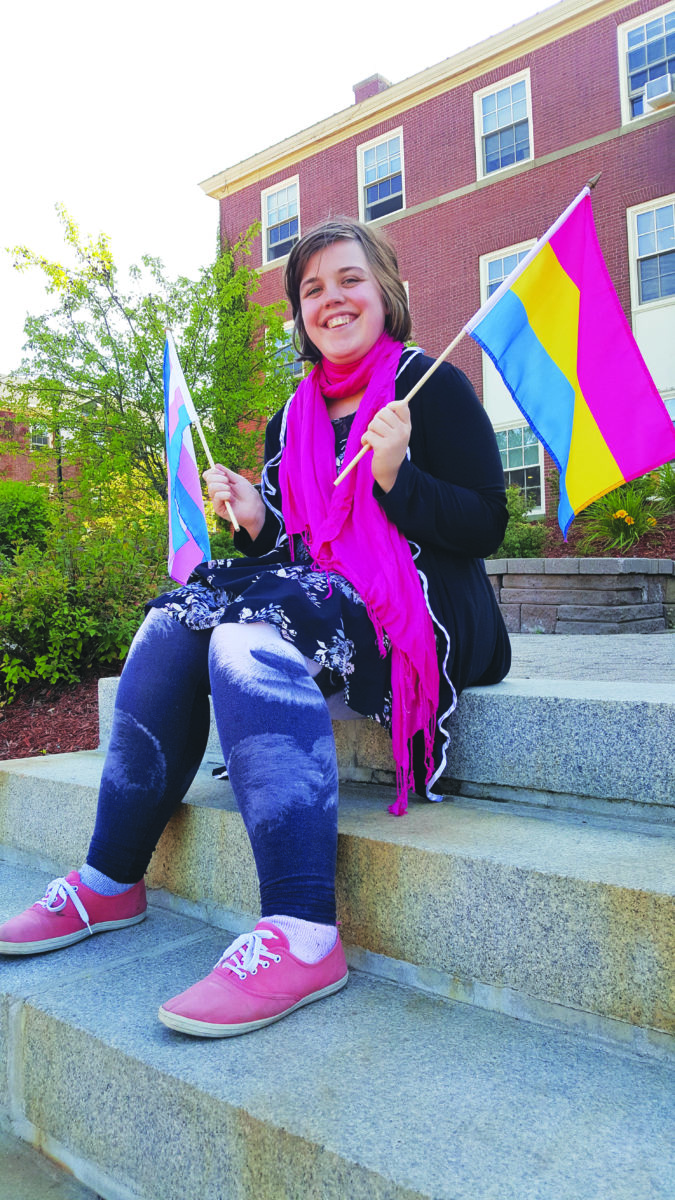
With STU’s second annual pride week happening this week, Cassidy Chisholm talked to members of the LGBTQ community to see how STU ranks in inclusion:
When Olivier Hébert and Elijah Matheson first came to St. Thomas University, there had never been a society or club exclusive to STU for the LGBTQ community, not to mention a pride week, on campus. With the idea of creating a pillar of representation, Hébert and Matheson, along with former student Al Cusack, created the Queer and Allied People’s Society of St. Thomas University.
STU’s annual pride week also grew from the idea of representing the queer community on campus.
“Pride week is an unapologetic show of ‘We’re here and we’re queer,’” said Hébert, who is also the queer representative of the St. Thomas University Students’ Union.
“The week is done early in the year to show new students right away that we have a presence at school.”
STU’s second annual pride week began on Monday with events planned for each day of the week.
“I’ve never felt more queer than when I’m at STU,” said Sara Nason, chair of the pride committee and coordinator of pride week.
“We have such a thriving community and it feels like we belong.”
Pride week is meant to connect the LGBTQ community and allies to create an environment everyone feels comfortable in.
“Pride week is not only a chance to showcase talent, but it’s also a chance to come together and feel comfortable in the knowledge that everyone is entirely accepted for who they are,” Nason said.
With that in mind, STU itself has made changes to accommodate the needs of the LGBTQ community.
After the initial push by Hébert and Matheson to create the Q&A Society, the administration introduced a resource advisor for LGBTQ students, created STU’s very own pride week, instituted more gender-neutral bathrooms and worked to create a sense of belonging for all students.
Second-year student Kailer Boyne can attest for the feeling of belonging at STU.
“The way professors, authority figures and student leaders treat LGBTQ students affects the way that general student body treats us,” they said.
Double-majoring in sociology and fine arts, Boyne has experienced acceptance since they first arrived at STU.
“My name hasn’t been legally changed, but I had it changed [with the registrar] last year before starting classes, and not a single professor has read a name from the list that I was uncomfortable with,” Boyne said.
“And last year all my classes started off with profs asking us our names and pronouns were first.”
Matheson, Hébert and Nason have all said the professors have been very accommodating, however, there are more ways that STU can become LGBTQ-friendly.
“Less gendered language could be used in class and on campus and there should be gender-neutral bathrooms in all the buildings, especially in James Dunn Hall where it’s the busiest,” Nason said.
Erin Fredericks is the resource advisor for queer students. She hosts non-mandatory workshops specifically for faculty explaining the do’s and don’ts of accommodating students on campus.
Both Nason and Hébert suggest having mandatory training for staff to further pursue inclusiveness for the queer community because things can always be improved, they said.
“It has to be preventative. There are a lot more proactive things [professors could do] instead of taking the reactive approach,” Matheson said.
“Don’t judge a book by its cover,” Hébert said.
“The person is more important than the assumed exterior.”
—
Clarification: The Sept. 26 issue of The Aquinian read, “There had never been a society or club for the LGBTQ community” on St. Thomas University’s campus before the Queer & Allied Society. However, Spectrum, a group which supports both UNB and STU LGBTQ students and allies, was established in 1989. The Queer & Allied Society is the first STU-exclusive group. The Sept. 26 issue also read “Hébert and Matheson created the Queer and Allied People’s Society”. Former student Al Cusack was also a founder.
